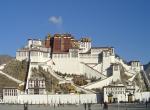The tremors from the convulsions wracking the Arab world are being felt in India too, in the amplitude that the Hazare drama is acquiring. This may not be grasped immediately as independent India has an autonomous record of organising non-violent political and social protests that have undone governments in the past, especially on the moral issue of corruption.
The differences in the two situations are obvious enough. The West Asian protestors are clamouring for more participation in decision making, whereas in India, which has a functioning democracy, the roots of protest lie not in installing a democratic system but in improving its functioning, with surgery to remove the canker of corruption. The protestors forced a regime change in Tunisia and Egypt, at least in ousting odious ruling families, but such is not the purpose of the agitation in India. Whereas in West Asia, the protestors had no recognized leadership, no central figure who served as a mascot for public mobilisation, in India we have Hazare.
In India a sui generis protest tool of an indefinite fast, with its powerful moral element of self-sacrifice, is being used as a source of public mobilisation, unlike in West Asia which has different cultural triggers. The Indian government, operating in the country’s constitutional and democratic framework, has an attitude to peaceful public protest that is vastly different from that of authoritarian West Asian regimes. Unlike in Egypt’s case, for example, the Indian authorities have not mixed permissiveness with brutal violence to deal with the Hazare challenge. Yemen, Bahrain, Libya and Syria are cases where massive violence has been used to suppress political protests for regime change, with external military intervention either to prevent or promote such change in accordance with outside interests.
The commonalities between the tumult in West Asia and the Hazare phenomenon are more subtle. The most important is the mounting self-confidence of the so-called civil society to bring about change. Tunisia and Egypt have served as powerful examples for social action elsewhere. In a democracy, however, this kind of a role arrogated by civil society can be a subject of interrogation. One could argue that democracy is by definition not only a recognition of the role of civil society but its expression. Universal adult suffrage, free and fair elections, political parties, the parliament and other representative institutions, an independent judiciary and a vibrant and free media are organically linked to civil society, and have no relevance outside that basic verity. In non-democratic regimes, power is concentrated in non-representative hands and the civil society, which really means the public at large, cannot influence decision making. In cases where the facade of formal democratic institutions, including elections, is erected, but actual power is exercised by a small political or military clique and decision making is opaque, the “civil society” can feel disempowered and can agitate for change.
In India the democracy-civil society equation is difficult to properly apprehend. If it is a question of decentralization of power in order to give greater room for political self-expression of different constituencies, our federal system provides for that. With coalition governments at the centre, opposition parties ruling in the states, the strengthening of panchayati raj instituitions, the “civil society” aspirations for dispersal of power within the system are met. If the argument is that the government has distanced itself from the people, that elections change governments but not governance, that pressing reforms necessary for improving the lives of people are being ignored, that institutions are no longer delivering, then it implies that democracy in India has become ossified and the constitutional mechanisms available for bringing about change are no longer effective.
If the malaise is so deep then can the Hazare kind of agitation cure it? Is it the calculation that a well meaning man, acting within the law, can galvanize public opinion to such an extent, and release such moral fervour in the nation as a whole, that the systemic problem that Indian democracy is facing can be resolved? Can he mobilise behind him all the powerful constituents of the system he is fighting? In all likelihood, the needed systemic change will not occur, though some functional improvements can take place as result of his campaign.
“Civil society”, including ours, has got pumped up after the fall of prominent modern Arab potentates through street pressure and has begun believing that it can wrought such transformation elsewhere. The Tahrir Square syndrome has had an emboldening effect across frontiers even if the objective circumstances vary from country to country. The educated, middle class Face-Book and Tweeting youth feel a new sense of empowerment going well beyond the periodic exercise of the right to vote. They can savour much more directly the heady feeling of being the instruments of change, collectively channeling their idealism and moral outrage with unprecedented speed and impact through novel means of communication and networking. A click of the button is sufficient effort for mobilisation.
The media’s incessant coverage of such street movements amplifies their impact further, as the melodramatic coverage of Hazare’s crusade also illustrates. A democratic government cannot easily control domestic coverage even if it seems irresponsible and destabilising. It is even less able to control international coverage which has played a vital role in shaping global opinion against specific Arab regimes as a prelude to military intervention or imposition of sanctions.
It is this external role in fomenting internal dissent in target countries that explains why, following a needless State Department comment, the US has been accused for supporting the Hazare movement. The US government has quickly retracted, but external interference to keep the temperature of protest in India high cannot be ruled out either through NRI activities abroad, attempts by Indian media to give domestic developments international resonance by inviting comments from foreign personalities- Aung San Suu Kyi for example- and covert funding from thriving foreign civil society promotion organisations.
The foreign media has begun taking notice of the challenge the Hazare movement is presenting to the government. If the movement persists, it will draw increasing foreign attention, with the corruption issue in India acquiring a high international profile and damaging not only to our image but also our economic prospects and indeed our national security.
With the disconcerting muscle that the civil society exhibited in West Asian developments, the government, fearing that Hazare’s Jantar Mantar protest could go out of control in the prevailing atmosphere, quickly offered negotiation. Recovering its nerve it dealt with Baba Ramdev’s challenge forcefully, but the replication of strong arm methods in dealing with Hazare’s second anti-corruption drive has back-fired, increasing Hazare’s moral belligerence, the sense of self-righteousness in his camp and media virulence against the government.
In all this, the government, which needs a drubbing for its sins, is being made to look worse than it is, Hazare better than he actually is, and his acolytes finer citizens than they are. The media is being more sensational than it needs to be, and the goodness of the cause is making the frustrated public more gullible than it should be. The Arab spring should not mean an Indian autumn.
------------------------------------------------------
Published in Mail Today 23rd August - 2011









Post new comment